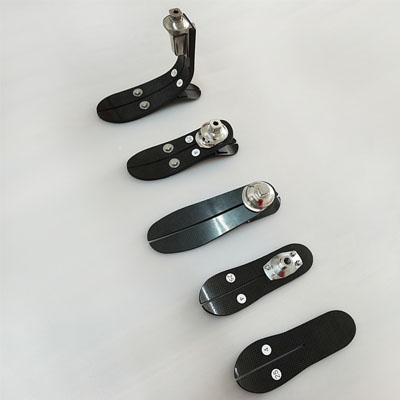How Do I Choose a Good Prosthetic?
There are a variety of prosthetic limbs designed to function - and in many cases look - just like a natural arm, leg, hand or foot. While there are many different designs, most share similar parts. These include.
When an arm or other limb has been amputated or lost, a prosthetic device or limb can play an important role in rehabilitation. For many people, prosthetics can improve mobility and the ability to manage daily activities and provide a means of maintaining independence.
Prosthetic Parts and Types
There are a variety of prosthetic limbs designed to function - and in many cases look - just like a natural arm, leg, hand or foot. While there are many different designs, most share similar parts. These include.
A socket where the amputated stump fits
A suspension device to secure the prosthesis to the stump
Shaft
Legs, hands or hooks
Cosmetic-looking coverings
Sockets are often lined with foam or silicone to protect the stump. Special socks are also worn over the residual limb to ensure proper fit and improve comfort.

Ankle Prostheses
The following are some of the most common types of prostheses.
Lower legs and feet. Many prosthetic feet can be used to simulate the movement of a natural foot after a below-knee amputation. At least one of the available ankle prostheses is controlled by a microprocessor. It uses feedback from sensors to adjust joint motion, thereby improving walking efficiency and reducing the risk of falls.
Legs and knees. For above-knee amputations, the prosthesis has both a knee and an ankle joint. There are over 100 prosthetic ankle, foot and knee models available. Some use fluid or hydraulically controlled devices that allow the user to vary their walking speed. Others use computerized components that allow the user to make rapid real-time adjustments while walking.
Arms and hands. The oldest and most commonly used prostheses are operated by the body's own motion and a harness that runs in a figure of eight across the back and under the opposite arm. Others use rechargeable batteries to run small motors on the prosthetic hand or limb. The battery improves grip strength.
Choosing and Using a Prosthetic Leg
Many factors are involved in choosing a prosthesis. They include
The location and level of the amputation
The condition of the residual limb
Your activity level, especially with a prosthetic leg or foot
Your specific goals and needs
The prosthesis is designed and fitted by a specialist called a prosthetist. The fitting process may begin in the hospital shortly after the amputation, after the swelling has subsided and the incision has healed. It involves.
Measuring the residual limb and the healthy counterpart
Applying the silicone liner
Making the plaster mold
Shaping the socket
Forming the plastic parts and then creating the metal parts of the limb
Attaching the shaft
Aligning the prosthesis
Depending on your comfort and wound healing, you may begin practicing with your prosthesis as early as a few weeks after surgery. A physical or occupational therapist will train you on how to use and care for it.